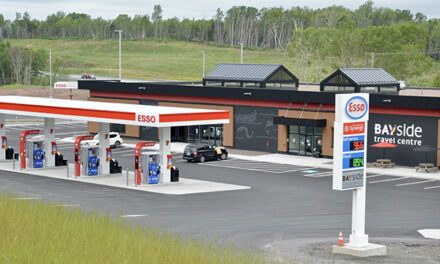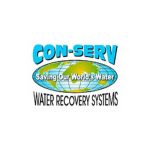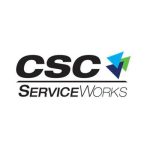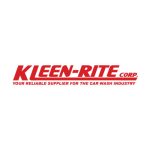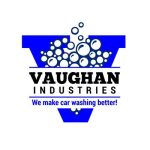
A Holistic Approach Can Help Optimize Fueling-Site Design and Operation

By Ed Kammerer
This article the first in a three-part series – will take a look at the typical “health” situation at many retail-fueling sites and then offer suggestions on how a holistic approach to outfitting and operating the business can lead to improved customer loyalty and profits.
It was in the mid-1970s, or nearly 50 years ago – though the idea had been developed as far back as the days of Socrates – that the concept of “holistic medicine” (or “health” or “healing” or “therapy”) began to gain mainstream attention, use and popularity. Basically, holistic medicine is a form of care that attempts to simultaneously optimize the health and performance of a person’s body, mind, spirit and emotions. Therefore, the foundational tenet of holistic medicine is based on the notion that a person can only achieve optimum health by living a life that is in the proper balance.
Which – because of course it would – brings us to a retail-fueling operation. Much like a human being, a retail-fueling operation is made up of many different parts, all of which must work in perfect harmony if the whole is to experience its optimum performance level. So, if one part isn’t functioning properly, then all of the other parts will be affected, meaning that any imbalances will have the potential to adversely affect ultimate performance from both a customer-satisfying and bottom-line financial perspective.
This article – the first in a three-part series – will take a look at the typical “health” situation at many retail-fueling sites and then offer suggestions on how a holistic approach to outfitting and operating the business can lead to improved customer loyalty and profits.
Survey Says…!
The first step in an undertaking such as this is to perform a bit of, as they say in the sports world, “self-scouting.” This involves casting a critical eye at the fuel-dispensing and storage systems and equipment at the site and assessing the health and performance of each component. When the site was first built, every piece may have been shiny and new, but over the years different pieces of equipment age at different rates, so while the tank sumps, for example, may be 10 years old, the shear valves may only be three.
The question then becomes is the newer equipment able to function harmoniously and reliably with the older equipment? Compiling answers to those types of questions will help give a better look at the overall health of the operation. It will also help determine where the weak links in the system are, knowing that the fueling system is only as strong as that weakest link.
Component age is also a variable to strongly consider. Most people don’t drive a 20-year-old car, and if they do, they must be cognizant of the fact that breakdowns may occur more frequently and OK with the idea that increased repair costs will be a significant part of the cost-benefit analysis behind driving a two-decade-old vehicle. The same theory applies for the operators of retail-fueling sites.
As mentioned, a healthy mind is a critical component in a holistically healthy body. The same, again, is true for the fuel retailer. The main job of fuel retailers is selling the “big four:” motor fuel, vehicle washes, snacks and beer. That’s where the majority of their daily attention should be, not wasting time praying to the “fuel-island gods” that water intrusion or fuel leaks don’t occur. Constantly focusing on maintaining and repairing aging, inefficient or ill-performing equipment takes focus away from the “big four” in addition to the time and money it takes to service aging or replace irreparable equipment.
There are also aesthetic considerations to take into account. A retail-fueling business that suffers from chronic “bag on nozzle” syndrome that leaves fueling islands inaccessible or constantly has repair vehicles dotting the lot will be less appealing to drivers, even (eventually) those loyal ones that have made your site their preferred refueling location.
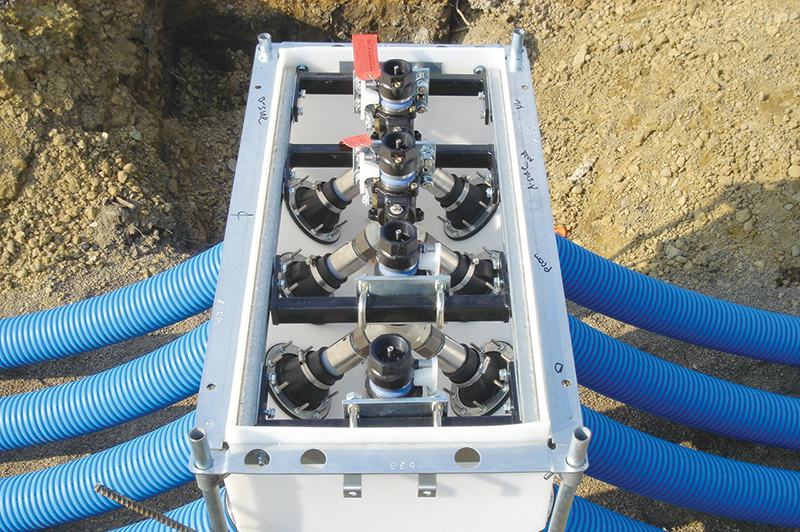
Closing The Loop
No matter the outcome of the personalized site survey, we recommend a holistic approach to outfitting a fuel-dispensing and storage system. Specifically, this requires standardizing on construction specifications and partnering with a dedicated equipment manufacturer, one who is a proven innovator with a history of field-tested fueling-system enhancements that allow the operator to focus on the money-making aspects of the operation. This also takes the guesswork out of any compliance, assembly, installation, maintenance and service questions that may arise, which will also help dramatically reduce total cost of ownership.
Let’s face it, though, finding a reliable and trustworthy one-stop source for your fueling-system equipment can be daunting. There are many different manufacturers and suppliers to choose from, all with their own particular product lines, but many haven’t been designed to work seamlessly with each other. That creates compatibility concerns that can negatively affect the system’s overall performance and reliability.
One company that has taken a holistic approach in designing its’ fueling-system equipment and components is OPW Retailing Fueling, Smithfield, NC, USA. This holistic approach is epitomized by the patented FlexWorks Loop System. The loop system is the industry’s first “plug-and-play” fueling system that consists of underground fuel-delivery and containment components, all of which are manufactured and pre-assembled at OPW’s factory before being shipped to the retail-fueling site. The loop system’s plug-and-play nature optimizes installation from the dispenser sump back to the tank sump because it requires minimal on-site sub-assembly work. This minimizes downtime and shortens the construction window, whether the business is a brand-new build or undergoing a knockdown rebuild.
The loop system – which is essentially failsafe – uses a combination of piping and connections; dispenser and tank containment sumps; entry fittings; and emergency shear valves to create a streamlined installation process. The loop system features double-wall coaxial piping that is contained within a larger access pipe, which allows a pipe section to be removed and replaced without needing to break concrete. All of the piping connections and fittings are located in containment sumps that are easily accessible from forecourt level, which simplifies inspection, testing, repair and replacement.
The pre-fabricated and assembled dispenser sumps are shallow and have angled sidewalls that will not deform or crack under burial loads. All piping penetrations are sealed with rigid (REF) or hybrid (HEF) entry boots that are compatible with long-term exposure to fuel and the environment, as well as ground forces and movement. The entry fittings are installed and tested at the factory, ensuring that they are in the exact location for proper connection to the dispenser’s piping inlets.
All piping enters and exits the shallow dispenser sumps at a 45-degree angle instead of horizontally, which makes them easier to install and connect near the top of the sump. The ends of the coaxial piping are fitted with double-wall swivel couplings or barbed NPT fittings that connect directly to shear valves that have angled connection ports. This method of coupling and connection eliminates the need for rubber interstitial test boots, additional pipe fittings and field-fabricated steel riser pipes or flex connectors that are required for use with deep-lying dispenser sumps.
OPW has also introduced the HiFlo Loop System, which takes the components from the original loop system and “supersizes” them so they are able to produce the increased flow rates that are required to realize expedient high-volume fueling of long-haul trucks at truck stops and larger hybrid convenience-store locations. While it is able to offer higher dispensing rates, the HiFlo Loop System possesses all of the features and benefits of the original Loop System, most notably pre-fabricated, factory-assembled components that drastically reduced the amount of field labor and time that are required to install it, while simultaneously lowering the risk that installation errors will occur.
For a more targeted holistic approach to fueling-system component construction, OPW has developed the Pre-Plumbed DSE Dispenser Sump, which is the newest addition to its E-Series Containment Sump family. Like all members of the E-Series sump family, the Pre-Plumbed DSE sump is constructed of fiber-reinforced plastic (FRP) using the next-generation Sheet-Molded Compound (SMC) manufacturing process. The SMC process produces consistently thick and smooth walls, inside and out, that enable entry fittings to bond and resist deflection more effectively, helping to create a watertight seal that can better prevent leaks.
In addition to boasting all of the features of the SMC-manufacturing process, the Pre-Plumbed DSE sump is fitted with factory-assembled and tested fittings, which are installed in a controlled environment at the factory by a trained installer. This helps eliminate field-installation errors by ensuring that all entry points are located in the correct configuration, allowing for quick and easy connection to the dispenser. That makes the Pre-Plumbed DSE sump ideal for use by operators who need to minimize construction time, reduce installation variability and reduce installation costs.
The Pre-Plumbed DSE sump is compatible with the Wayne Ovation and Gilbarco Encore dispenser models. It is shipped to the retail-fueling site with OPW 10 Plus Emergency Shut-Off Valve, dual-sided Rigid (REF) or Hybrid (HEF) Entry Fittings, flex connectors or NPT rapid-riser pipe nipples, and secondary test kits and test jumpers, making it a holistic way to streamline that installation process while helping reduce the risk of installation errors occurring.
Conclusion
If implemented properly, a holistic approach to health care can have many benefits, and the same can be said for adopting a similar approach to outfitting a retail-fueling site. Identifying and partnering with a trusted and respected fueling-system manufacturer and provider is the first step in building a holistic system – one that will have long-term operational and bottom-line benefits. In future articles, we will take a closer look at ways that this holistic strategy can aid fuel retailers who are looking to upgrade existing sites or build new ones.
Ed Kammerer is th e senior director, Global Product Management for OPW, based in Cincinnati, OH, USA. He can be reached at ed.kammerer@opwglobal.com. For more information on OPW, go to opwglobal.com.







